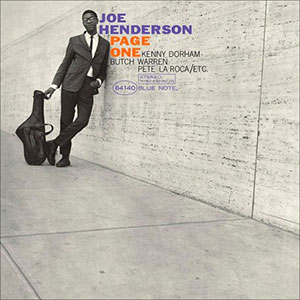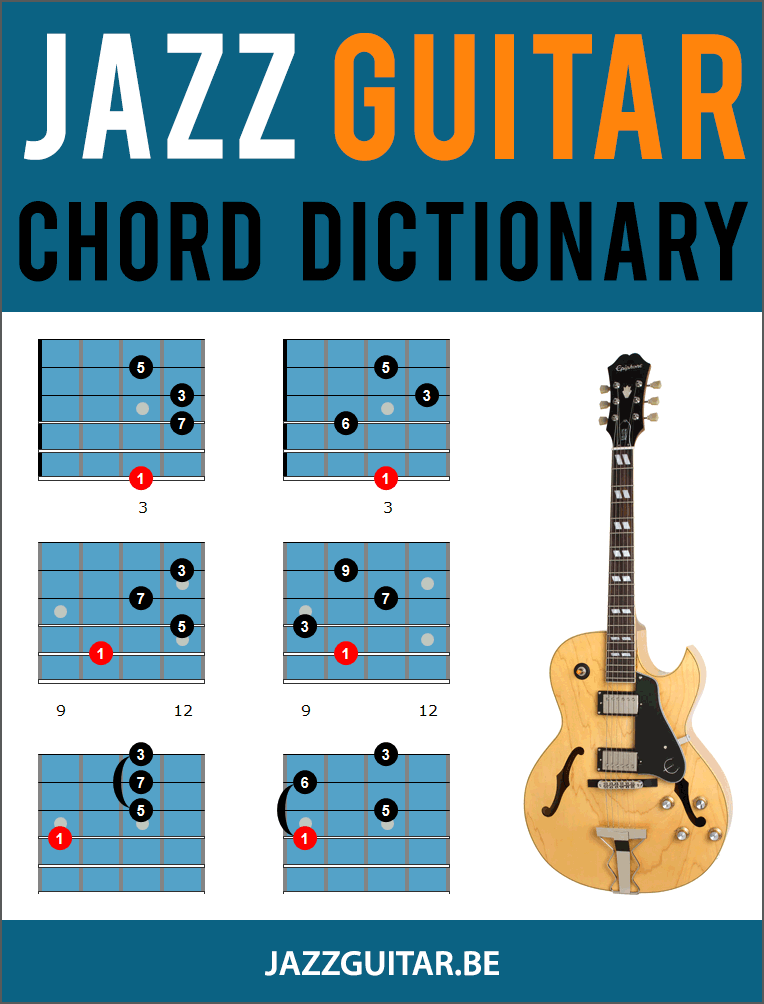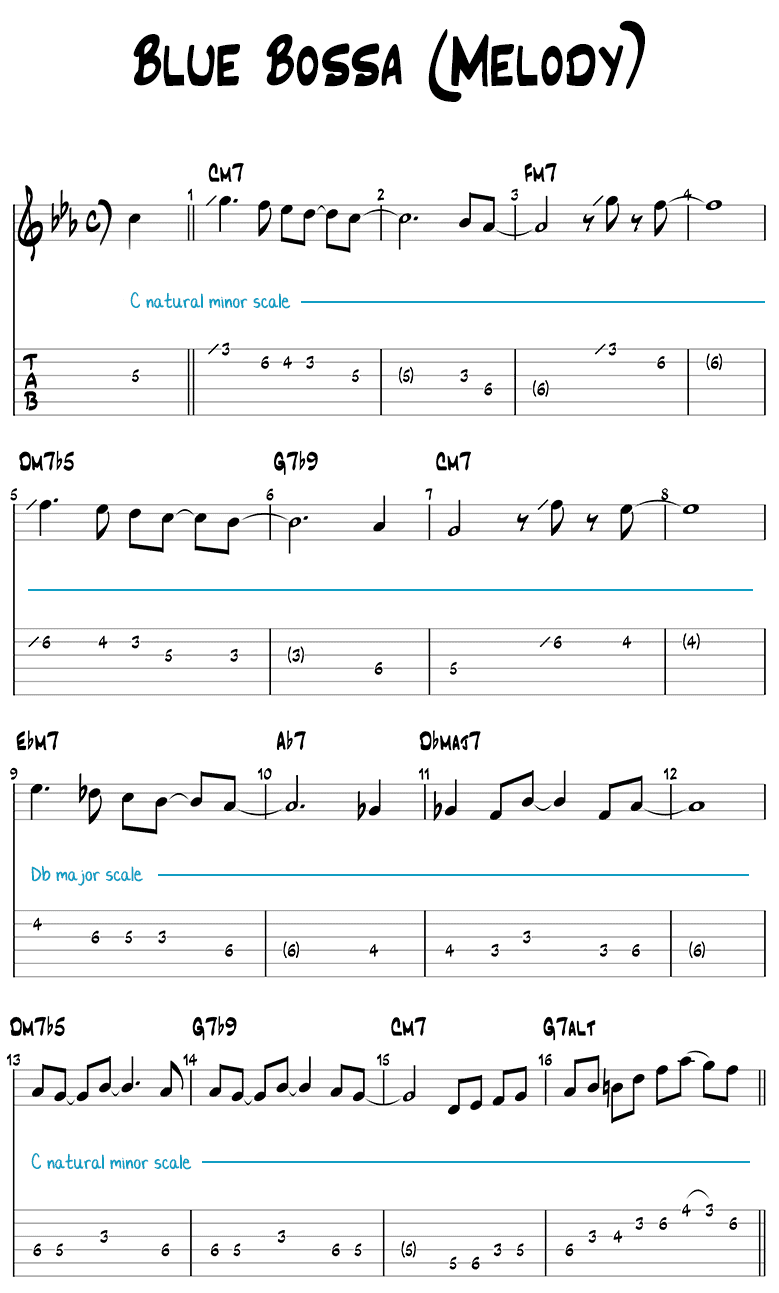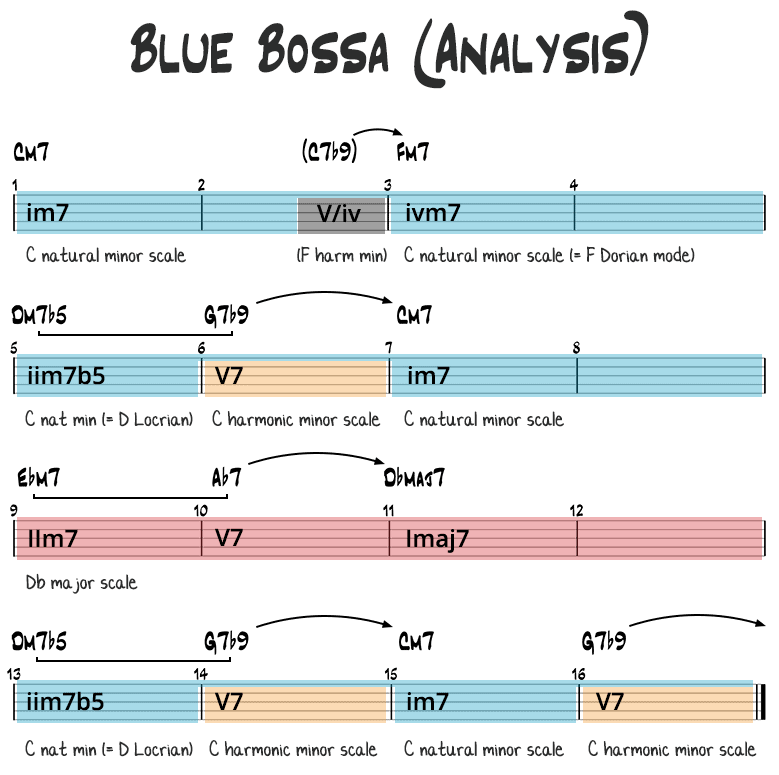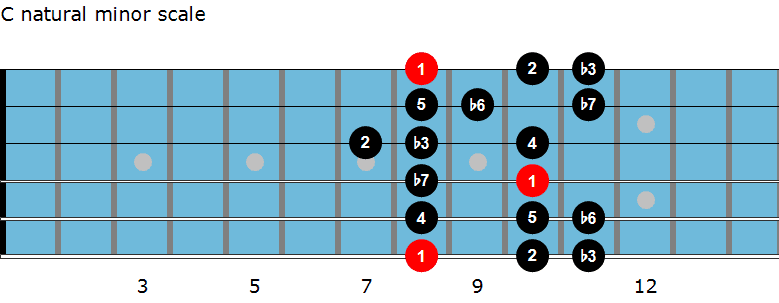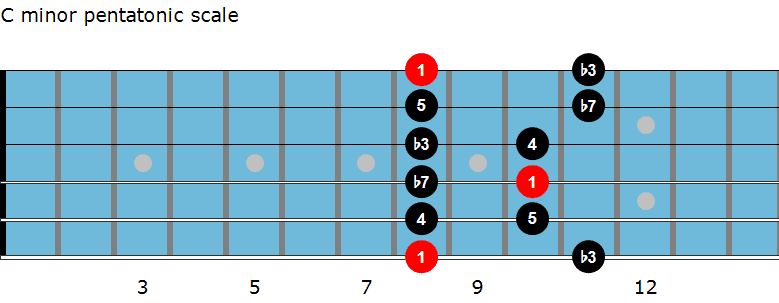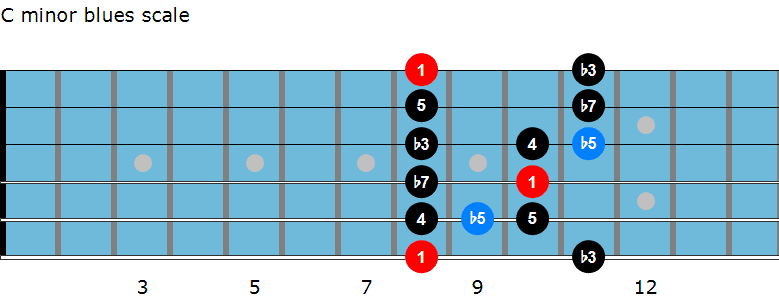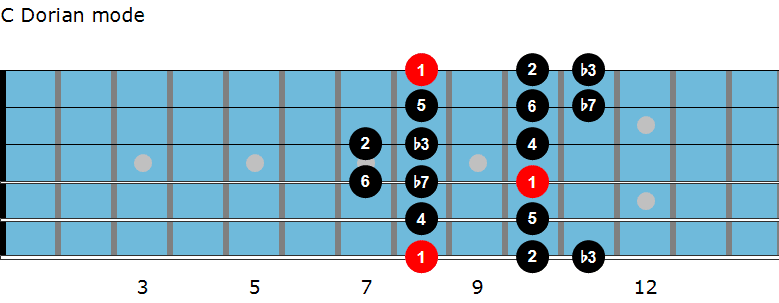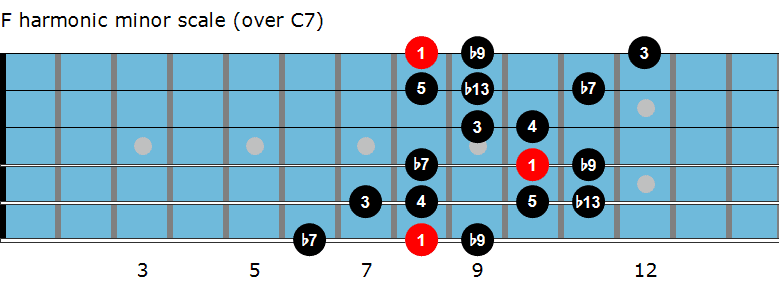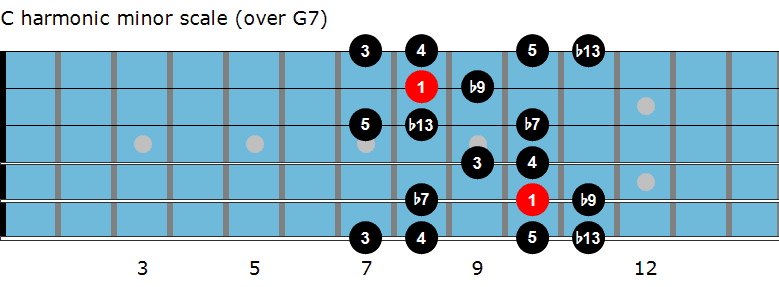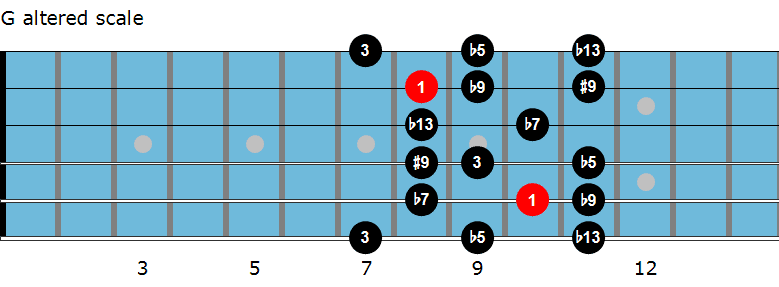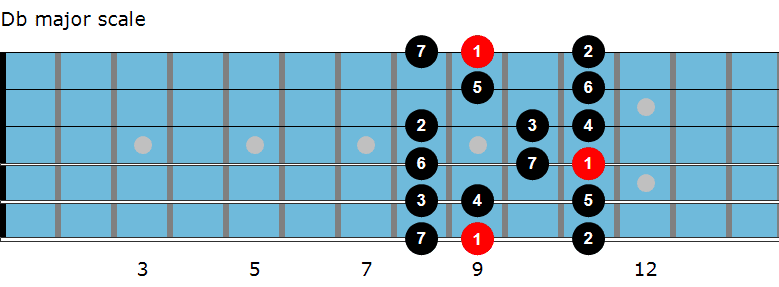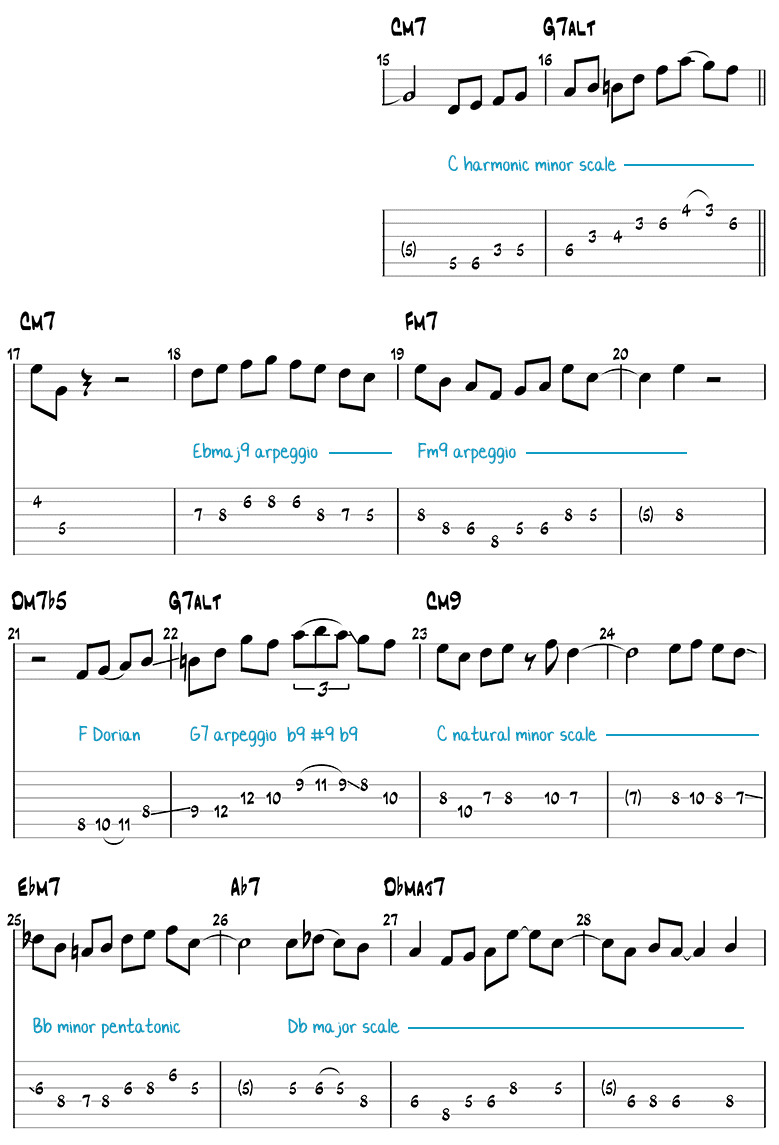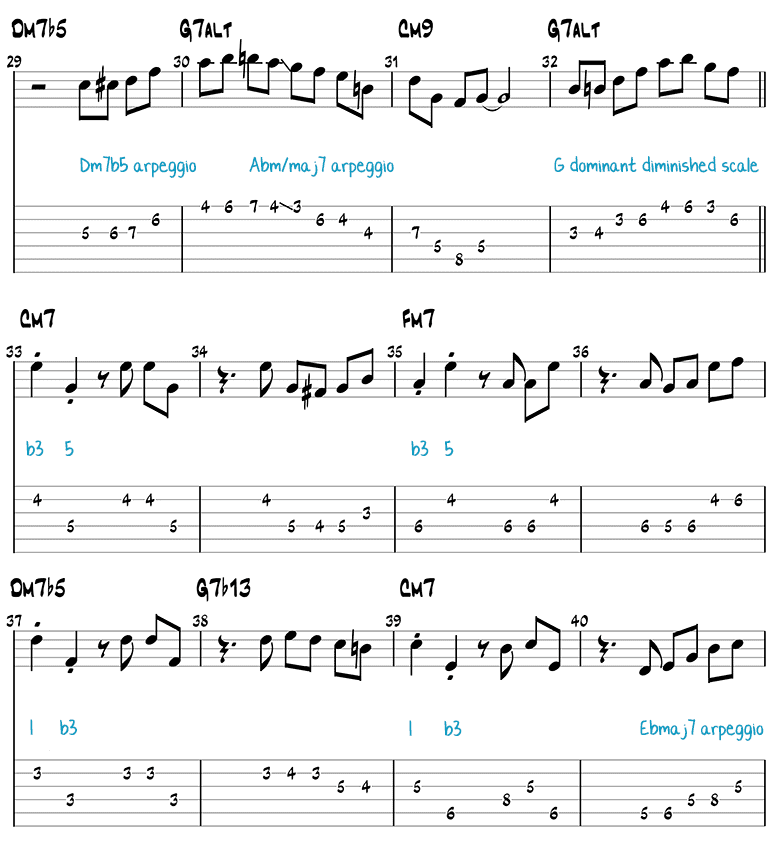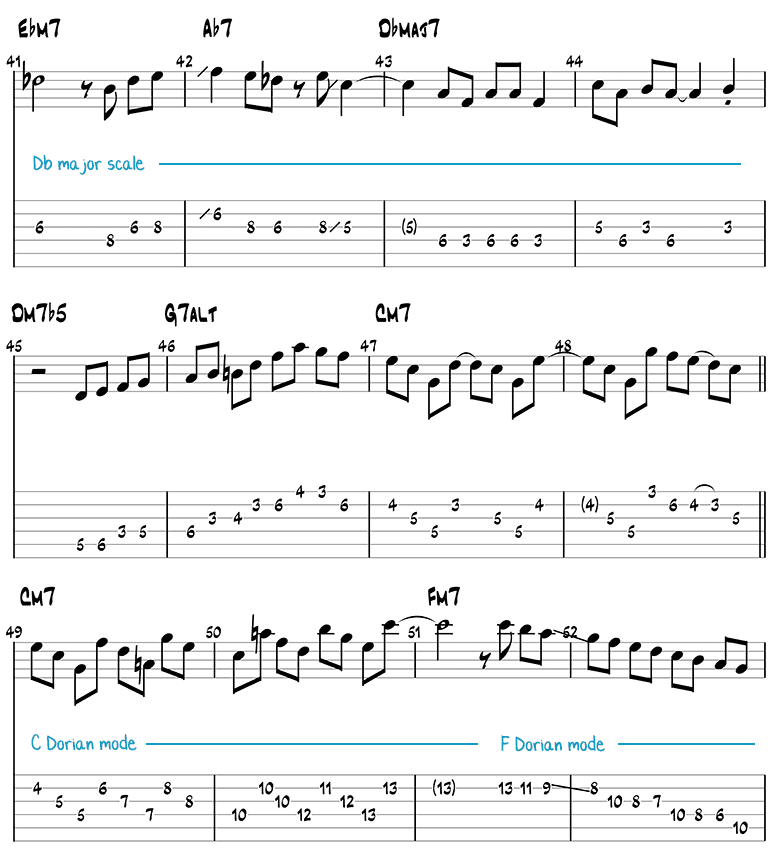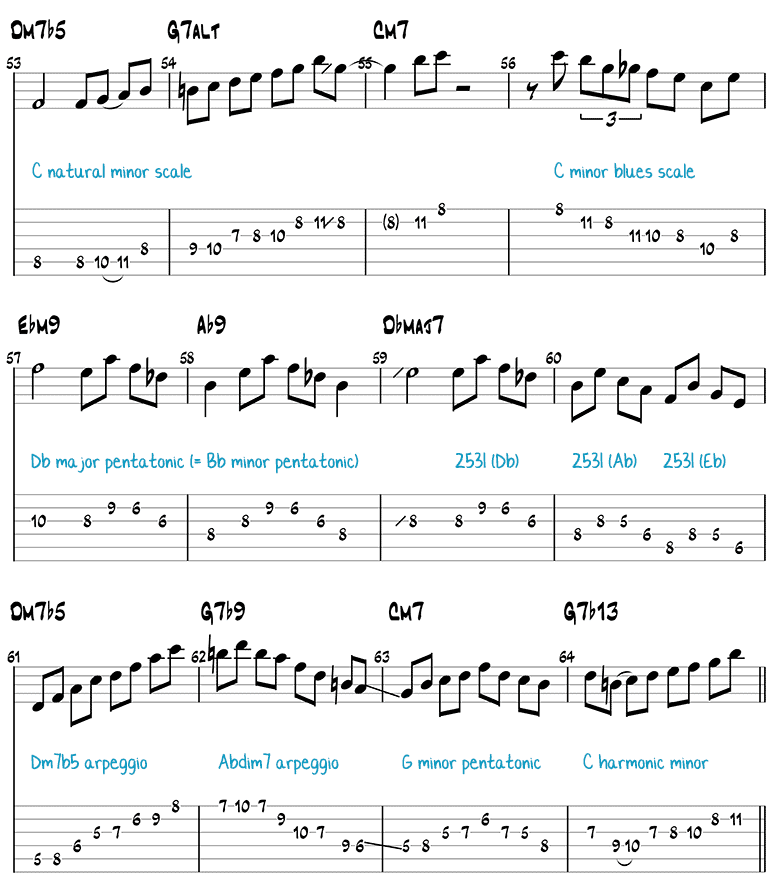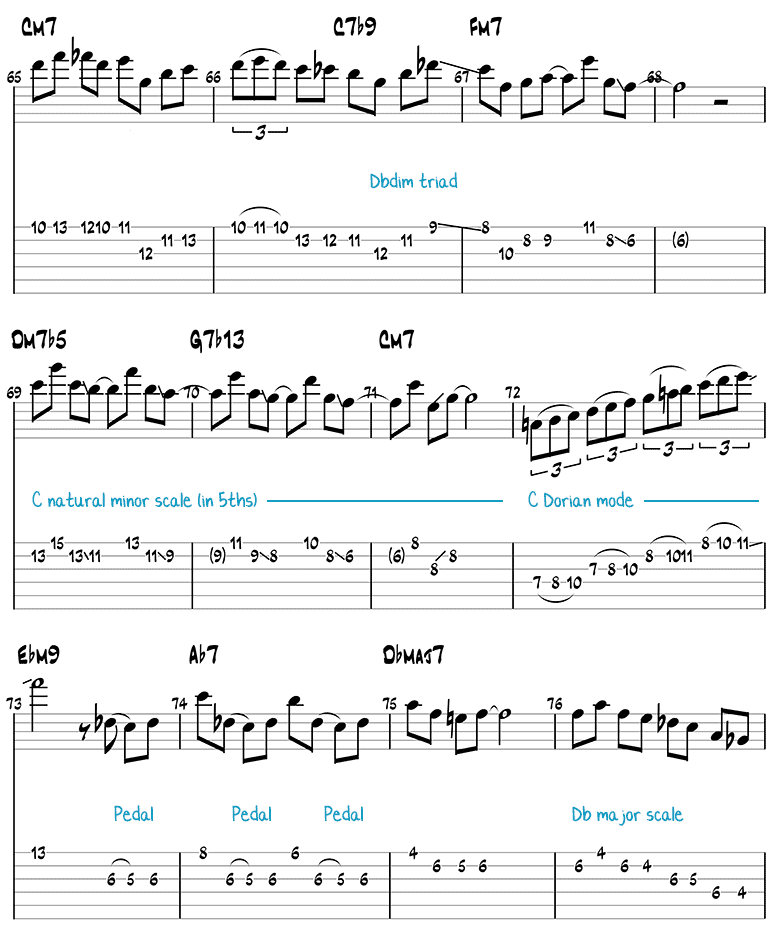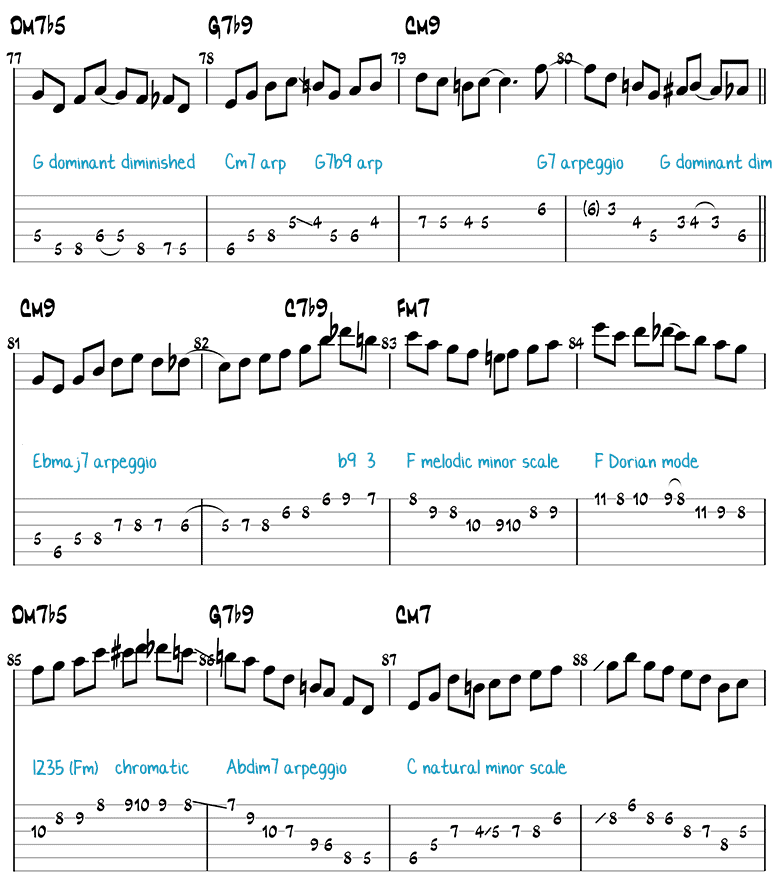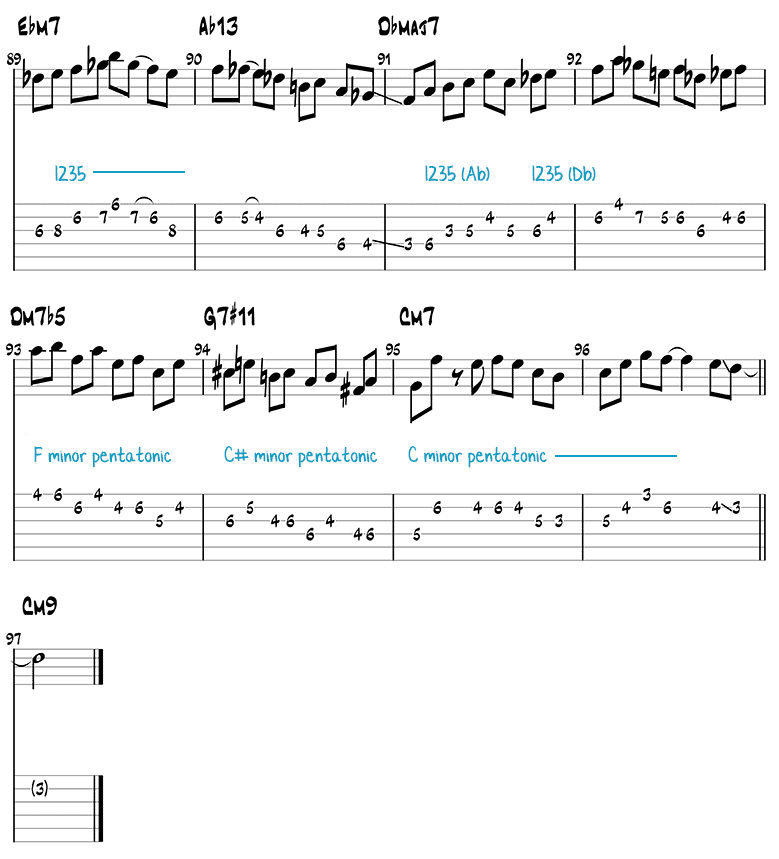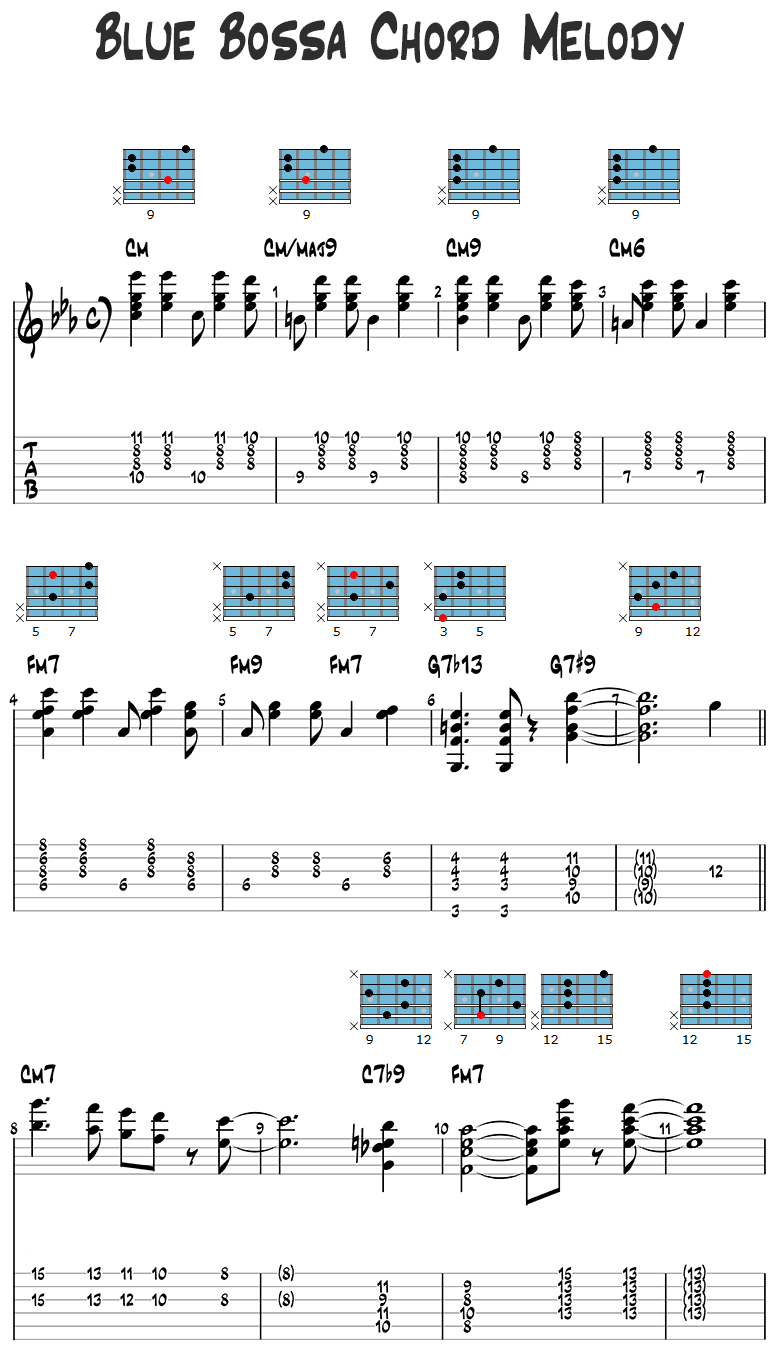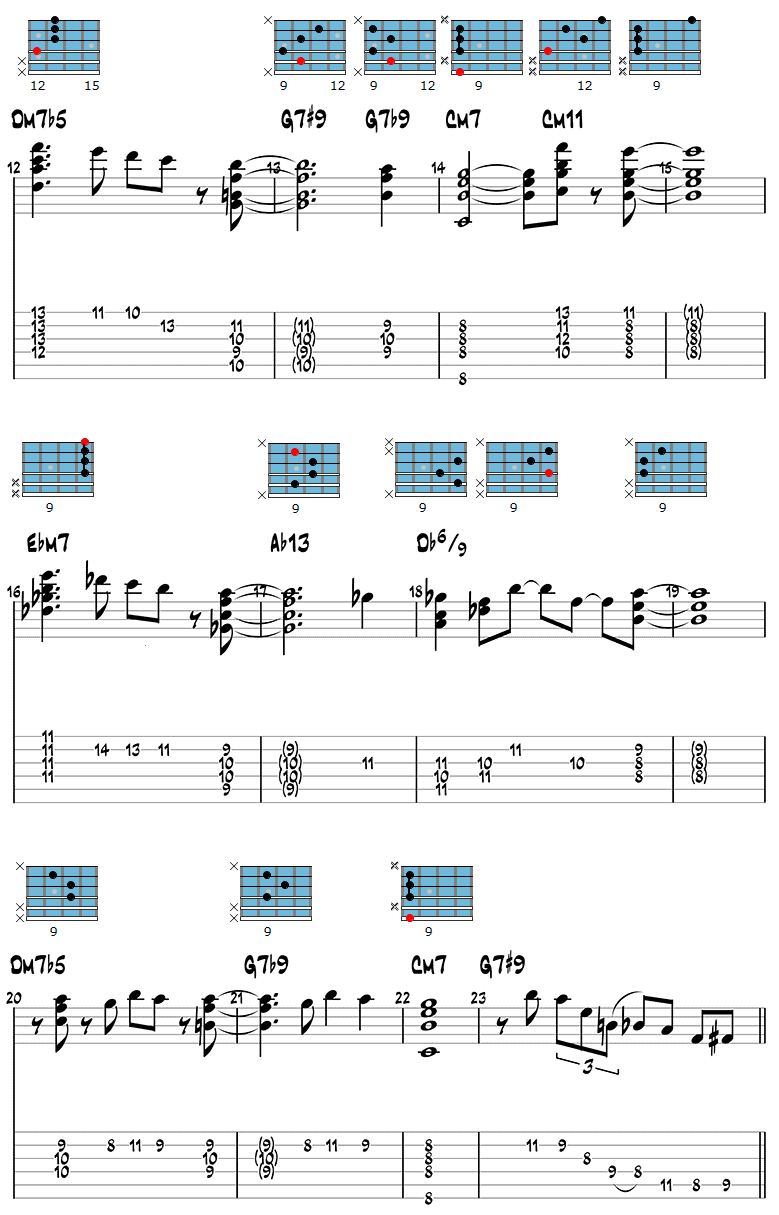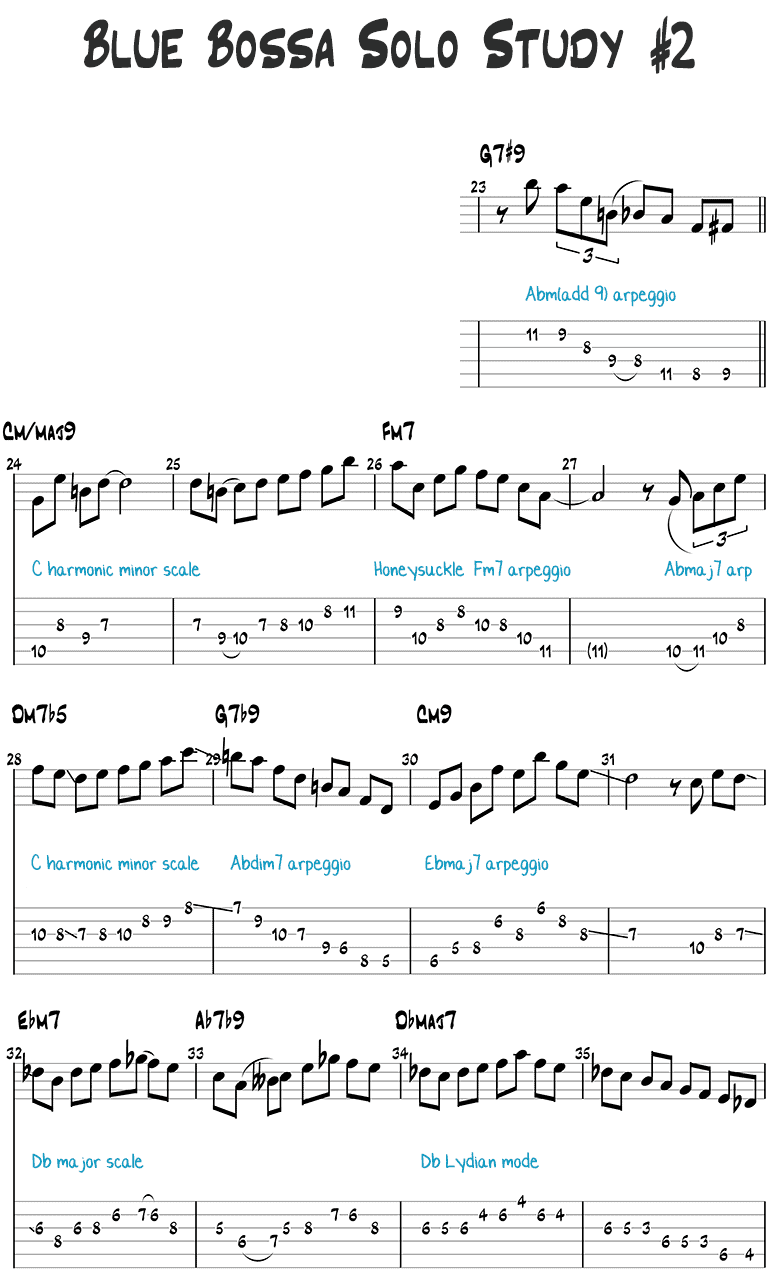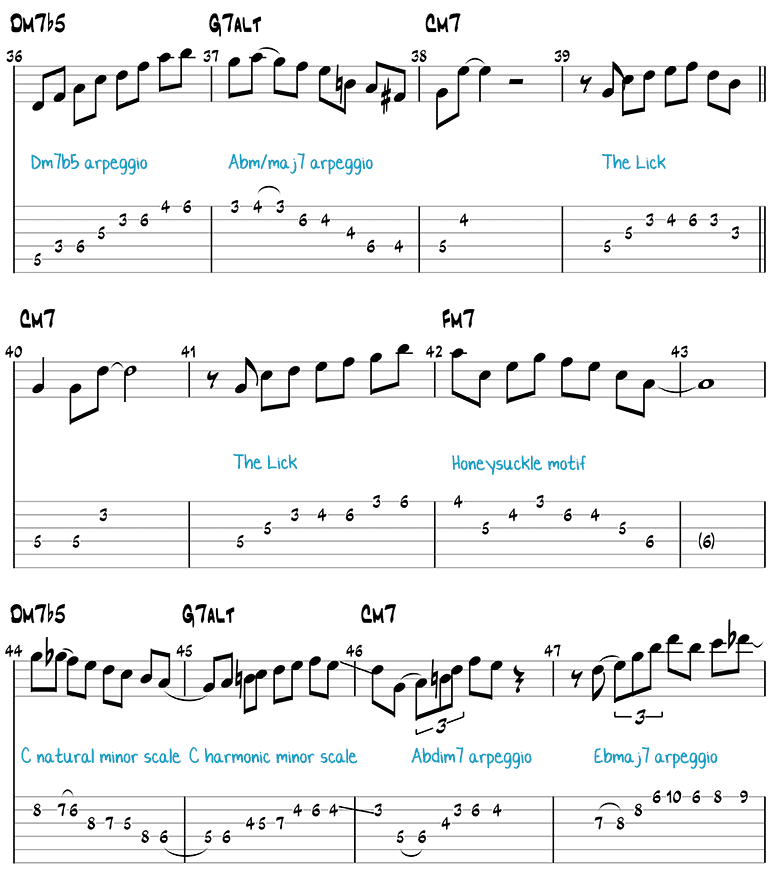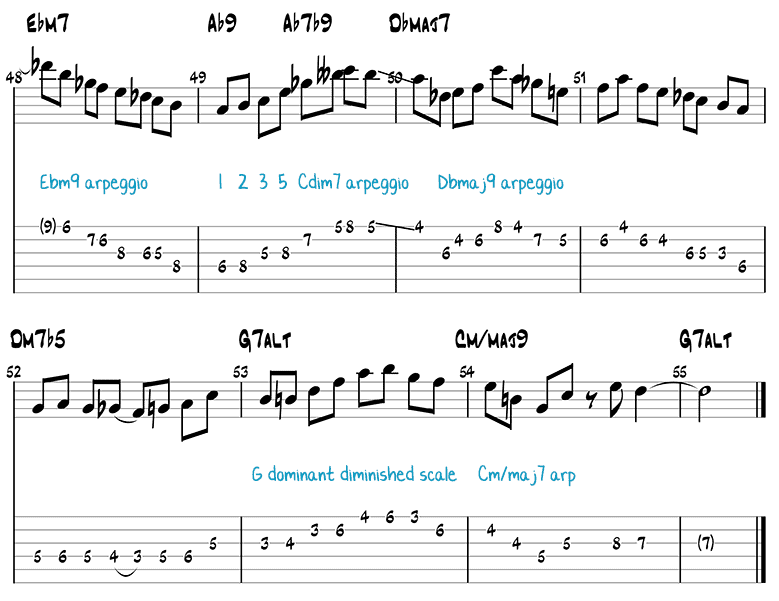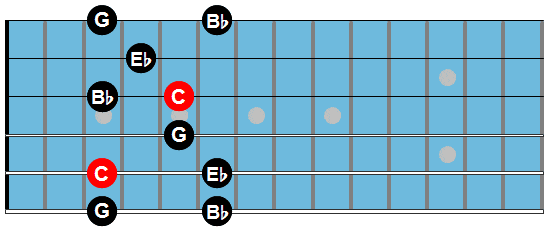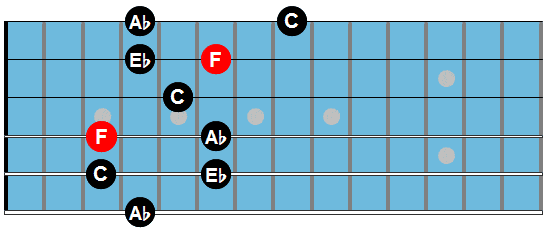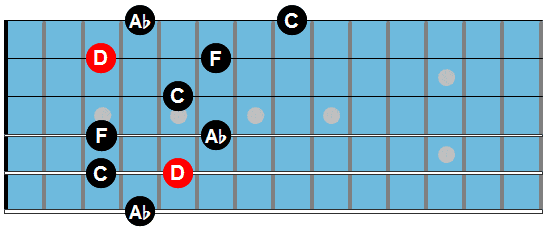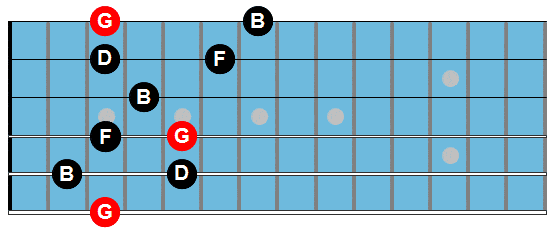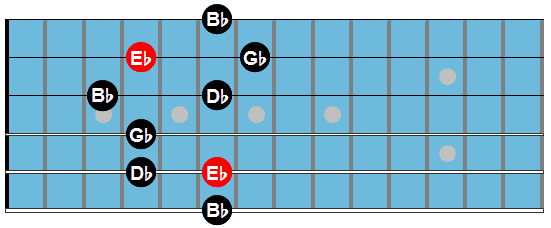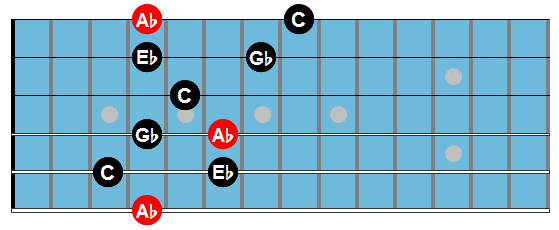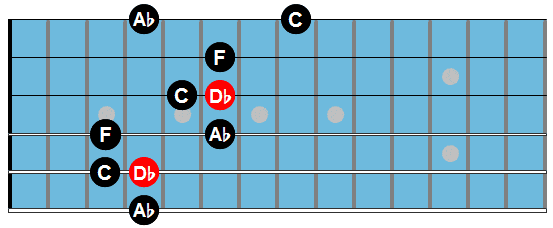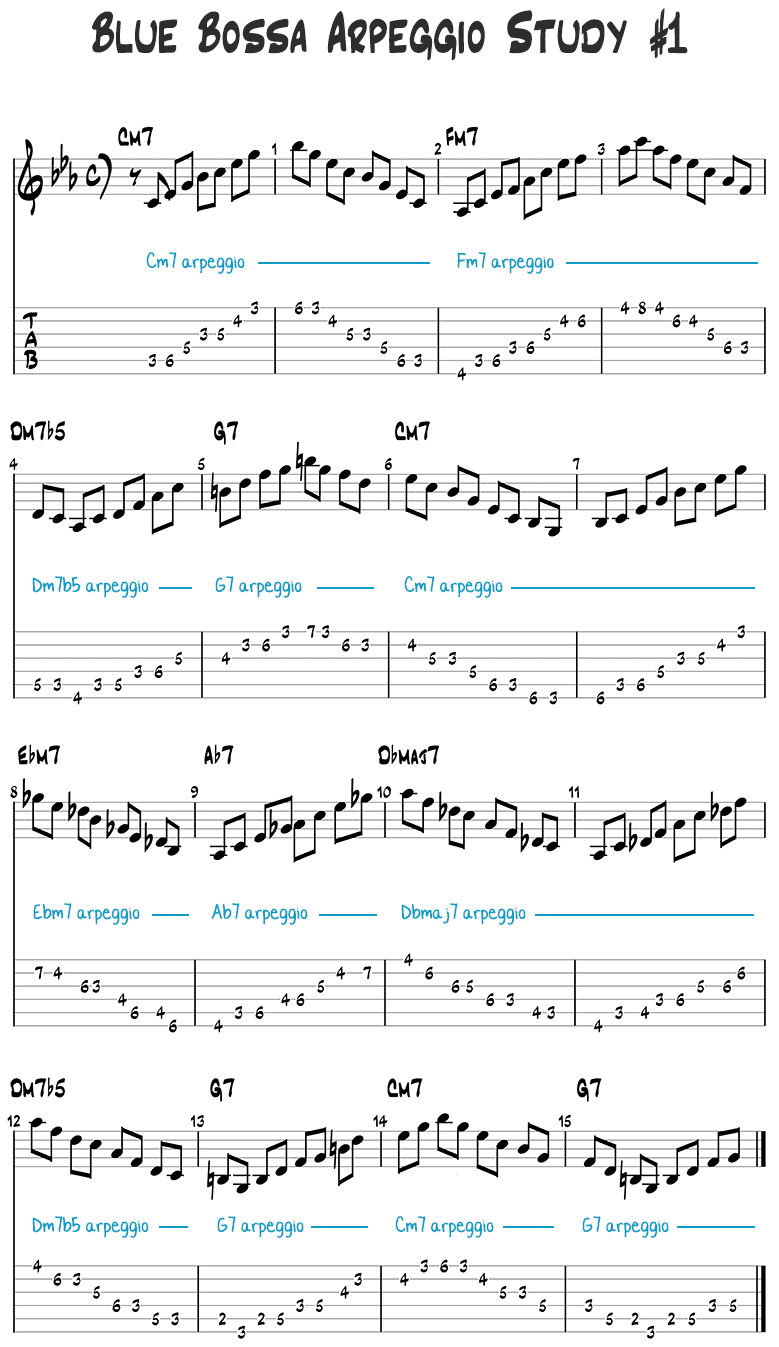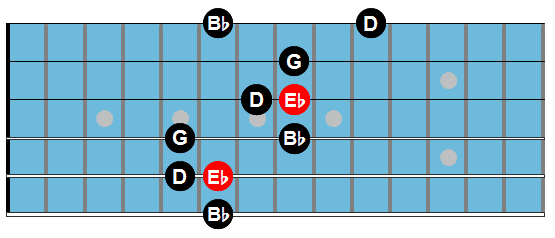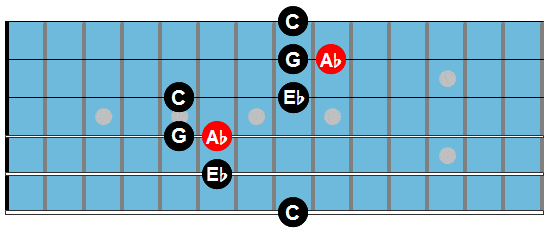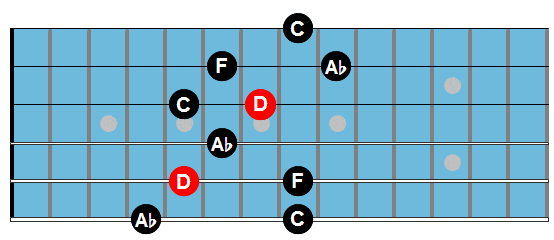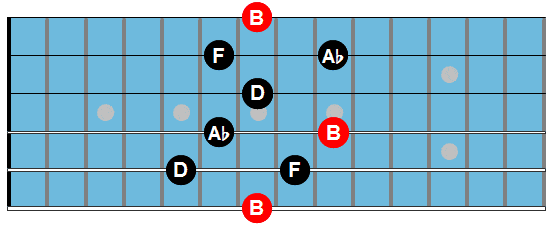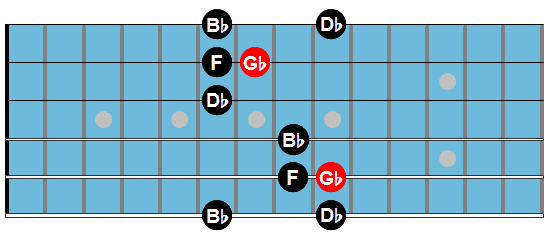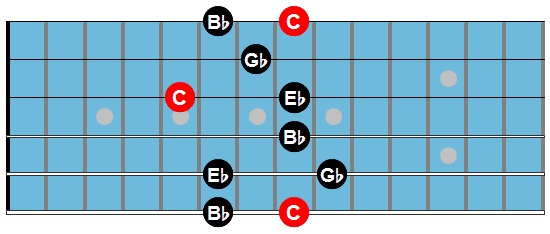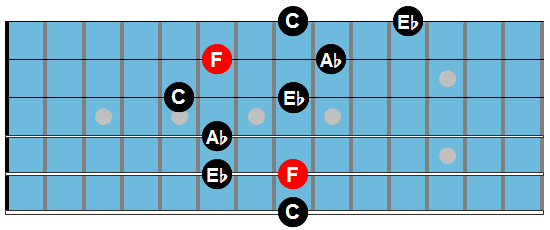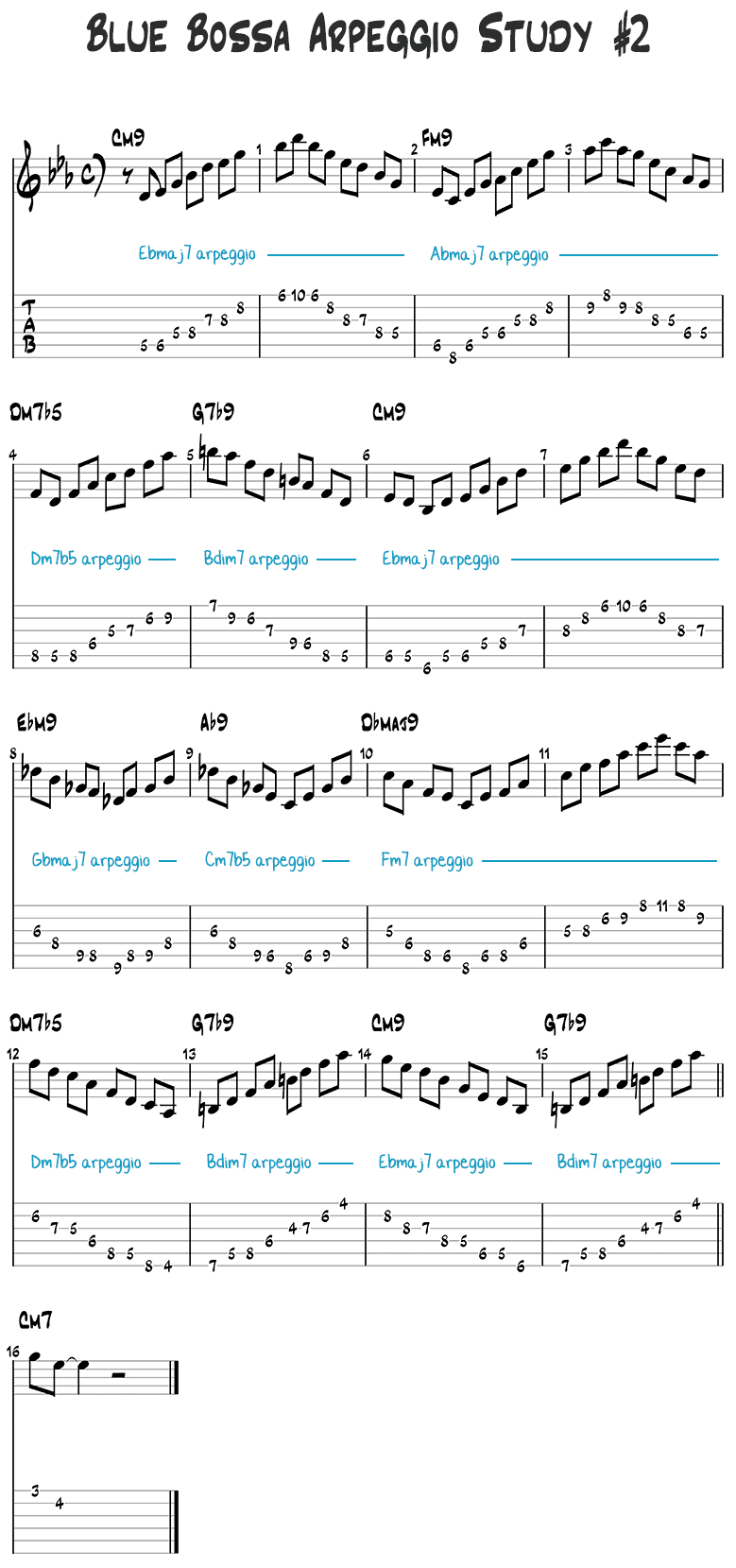- Blue Bossa. Каркас из опорных нот. Мелодические линии. Компинг.
- Каркас из опорных нот. ( Урок)
- Пример импровизации только опорными тонами
- Blue Bossa
- What You Will Learn in this Blue Bossa Lesson
- Blue Bossa Video 1 – Single-Note Melody and Solo
- Blue Bossa – Melody
- Blue Bossa – Chord Analysis
- C Natural Minor Scale (Measures 1-8 and 13-16)
- F Harmonic Minor Scale (Measure 2)
- C Harmonic Minor Scale (Measures 6, 14, and 16)
- Db Major Scale (Measures 9-12)
- Blue Bossa – Solo Study 1
- Blue Bossa Video 2 – Chord Melody and Easy Solo
- Blue Bossa – Chord Melody Theme
- Blue Bossa – Solo Study #2
- Blue Bossa – Arpeggio Study 1
- Blue Bossa – Arpeggio Study 2
- Blue Bossa Guitar Chords
- What’s in These Blue Bossa Chord Studies?
- Blue Bossa Chord Study 1
Blue Bossa. Каркас из опорных нот. Мелодические линии. Компинг.
Друзья, этот материал взят из пособия в помощь изучающим импровизацию и джазовые стандарты.
Основной концепт этих видео, дать некий банк идей для работы с конкретным джазовым стандартом. В данном материале это стандарт Blue Bossa.
Первое видео посвящено тому что я называю мелодическо-гармоническим каркасом для стандарта.
В нем я обьясняю следующее:
• Для чего нужен такой каркас из опорных нот
• Из чего он состоит
• Импровизация без заготовленных фраз
Следующие видео это:
• пример импровизации только опорными тонами.
• Видео пример мелодических линий 8ми нотами
• Пример компинга на последовательность Блю Босса
А также сама таблица аккордов и необходимых для их обыгрывания мелодических элементов.
Таблица в форма WORD
Поехали!
Каркас из опорных нот. ( Урок)
Пример импровизации только опорными тонами
Источник
Blue Bossa
Blue Bossa is a popular bossa nova standard written by Kenny Dorham and made popular by Joe Henderson on his album Page One (1963). It was written after Dorham visited the Rio de Janeiro Jazz Festival in 1961.
Blue Bossa is a good song for beginners to practice improvisation over chord changes because it is usually played at a medium tempo and has an easy-to-follow harmony (including a modulation). Blue Bossa is often played at jams, so it’s a good idea to add it to your repertoire.
Besides The Girl From Ipanema, Blue Bossa must be the most popular bossa nova song ever.
Recommended listening:
- Joe Henderson – Page One (1963)
- Dexter Gordon – Biting the Apple (1976)
- Joe Pass & J.J. Johnson – We’ll Be Together Again (1988)
- Pat Martino – Comin’ and Goin’ (1999)
- Jimmy Rosenberg – Trio (2004)
THE JAZZ GUITAR CHORD DICTIONARY (FREE eBOOK)
Download now and learn 244 chord shapes!
What You Will Learn in this Blue Bossa Lesson
Blue Bossa Video 1 – Single-Note Melody and Solo
Blue Bossa – Melody
Backing Track (195 bpm)
Blue Bossa – Chord Analysis
Before we go on to the solo, let’s first have a look at the harmonic structure and the scales you can use over Blue Bossa.
Structure: 16 bars long
Key: C minor
C Natural Minor Scale (Measures 1-8 and 13-16)
On the blue parts, you use the C natural minor scale, aka the C Aeolian mode.
As an alternative, you can use the C minor pentatonic scale or the C minor blues scale.
On the Cm7 chord, you can also play the C Dorian mode.
F Harmonic Minor Scale (Measure 2)
As an optional variation, you can make bar 2 into a C dominant 7th chord, by playing the F harmonic minor scale.
C7 (in Blue Bossa) is a secondary dominant chord (V/iv) that resolves to Fm7.
A secondary dominant is a dominant chord that resolves to any chord that is not the tonic (I).
The scale of choice to play over C7 is the F harmonic minor scale, also known as the C Phrygian dominant scale or the C Mixolydian b9 b13 scale.
| F harmonic minor scale | F | G | Ab | Bb | C | Db | E |
|---|---|---|---|---|---|---|---|
| Played over C7 | 11 | 5 | b13 | b7 | 1 | b9 | 3 |
C Harmonic Minor Scale (Measures 6, 14, and 16)
The scale of choice over the dominant chord (G7) is the C harmonic minor scale (= G Phrygian dominant).
As an alternative, you can play the G altered scale over the G7.
Db Major Scale (Measures 9-12)
Here the chord progression modulates to Db major.
This is a regular II V I progression, and you can play the Db major scale (=Db Ionian mode) over it.
Blue Bossa – Solo Study 1
Backing Track (195 bpm)
Blue Bossa Video 2 – Chord Melody and Easy Solo
Blue Bossa – Chord Melody Theme
I arranged the melody of Blue Bossa the way you would play it in a jazz trio by adding chords to the melody.
When you play in a combo without a piano or another guitar player, it’s a good idea to harmonize your melodies.
Backing Track (155 bpm)
Blue Bossa – Solo Study #2
Backing Track (155 bpm)
Blue Bossa – Arpeggio Study 1
Arpeggios are an important tool for jazz musicians because they enable you to mirror the harmony of a tune in your solo, something that’s harder to achieve with scales.
The best way to learn arpeggios is:
- Memorize the shapes for all chord types in all positions.
- Play them over chord changes in one position without stopping (in continuous 8th notes). This forces you to come out of your comfort zone because you’ll end up in places on the guitar neck that you’re not very familiar with.
- Do this in all positions.
The following arpeggio study over Blue Bossa will help you on your way. I play the arpeggios continuously up and down the strings and stay in one position.
Here’s how you use the study:
- First, memorize the arpeggio shapes of Blue Bossa (see below).
- Play the study a couple of times.
- Now try the exercise without the sheet music.
- Try starting on another note of the chord. I begin the study on the root of Cm7, but try starting on any other chord tone.
- When you know this position well, go to another position and do the same. Try starting on the C of the 6th string for example.
These studies are not meant to sound good, but they are a good way to master arpeggios so you can use them in a more creative and musical way in your solos.
Here are the arpeggio shapes used in this study:
Cm7
Fm7
Dm7b5
G7
Ebm7
Ab7
Dbmaj7
Listen & Play Along
Blue Bossa – Arpeggio Study 2
In study 2 we add the first extension to every chord (the 9) by using chord substitutions.
Here’s how this substitution works:
- You know that chords are built by stacking triads. For example, a Cmaj7 chord is built with the notes C E G B
- Instead of stopping at the 7, we can add more thirds. In the case of Cmaj7, we can add a third on top of the B, the D.
- The result is a Cmaj9 chord: C E G B D
- Now you omit the root of that chord. These notes are left: E G B D, the notes of Em7.
- Instead of playing a Cmaj7 arpeggio over Cmaj7, you will now play an Em7 arpeggio over Cmaj7.
Playing an Em7 arpeggio over Cmaj7 gives us the major 9 sound:
| Em7 Arpeggio | E | G | B | D |
|---|---|---|---|---|
| Played over Cmaj7 | 3 | 5 | 7 | 9 |
Playing substitutions gives us a richer sound compared to playing the vanilla arpeggios, something that is almost always desirable. Make yourself accustomed to playing chord substitutions instead of the plain chords.
Here are the substitutions for Blue Bossa’s chords:
Cm7: Ebmaj7
Fm7: Abmaj7
Dm7b5: here we play the plain chord for now.
G7: Bdim7
Ebm7: Gbmaj7
Ab7: Cm7b5
Dbmaj7: Fm7
Listen & Play Along
Blue Bossa Guitar Chords
One of the most common non-swing rhythms that jazz guitarists explore is the bossa nova groove. While many of us learn to play Brazilian jazz tunes in our practice routine, learning how to play an authentic bossa or samba groove on the guitar can be tricky.
To help you get a handle on how to play an authentic groove over any Brazilian jazz tune you are learning, we’ve put together two chord studies featuring a popular Samba/Bossa groove that you should get under your fingers and apply to your playing.
What’s in These Blue Bossa Chord Studies?
Here are short descriptions for each of the chord and bossa concepts covered in the chord study below so that you can understand the building blocks of this exercise.
m9 Chords – Whereas jazz guitarists prefer m7 chords for minor sounds, it is very common in Brazilian music to use m9 chords instead. These m9 chords, 1-b3-5-b7-9, have a bit of a “softer” sound than m7 chords and help create the smooth sounding quality that we associate with bossa music.
7b13 Chords – Here, there is a bit of voice leading at play where you are moving from the E note on top of the Dm9 chord for example, to the Eb on top of the G7b13 chord, to the D on top of the Cmaj9 chord. This type of half-step movement on top of chords is commonly found in the playing of many Brazilian guitarists.
Maj9 Chords – This is a softer version of the maj7 chords that many jazz guitarists prefer to use for their Imaj7 and IVmaj7 chord voicings.
m11b5 Chords – Here, you are replacing the 3 rd of Dm7b5 with the 11 th in a commonly used alternate shape for a m7b5 chord. When adding this chord into your playing, you can play the m11b5 to the m7b5, or vice-versa, in order to create some melodic movement on top of the chord changes.
Bossa Bassline – During the chord study you will notice that the thumb plays bass notes on 1 and 3 of each bar, mostly the root note but sometimes the 5 th or a chromatic note can be added in to create movement as well. When playing these bass notes, you should accent the 3 rd beat in order to create a more authentic Brazilian feel with this chord study.
Anticipated Chords – You will notice that between bars one and two, and the first and second bars of each two-bar group, the chord in the second bar is played on the & of 4 in the first bar. This anticipated chord movement is common in Brazilian music, and it will be one of the hardest parts of learning this chord study, or any Brazilian tune on the guitar. So, take your time, isolate these moments and work them on their own before going back and trying to work the study as a whole.
Syncopated Accents – As was the case with the accented 3 rd beat in the bass notes, you will want to accent the upbeat chords a little in order to create the swing feel that you hear in Brazilian music. You don’t have to play heavy accents, but just making the upbeats a little louder than the downbeats will help get the authentic Brazilian feel you hear on classic recordings.
Blue Bossa Chord Study 1
In this first Blue Bossa chord study, I play a typical bossa nova rhythm guitar pattern on acoustic guitar.
Notice that bossa nova chord patterns always have the following specifics:
- The bass notes come on the beat and are played with the thumb.
- Usually, the root note is alternated with the 5th (or a b5 in the case of m7b5 chords) in the bass.
- The top voices of the chord are syncopated (syncopation = accenting a normally weak beat).
Источник

